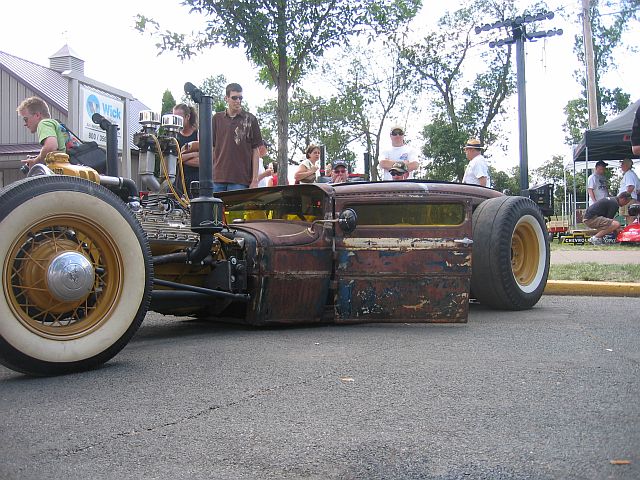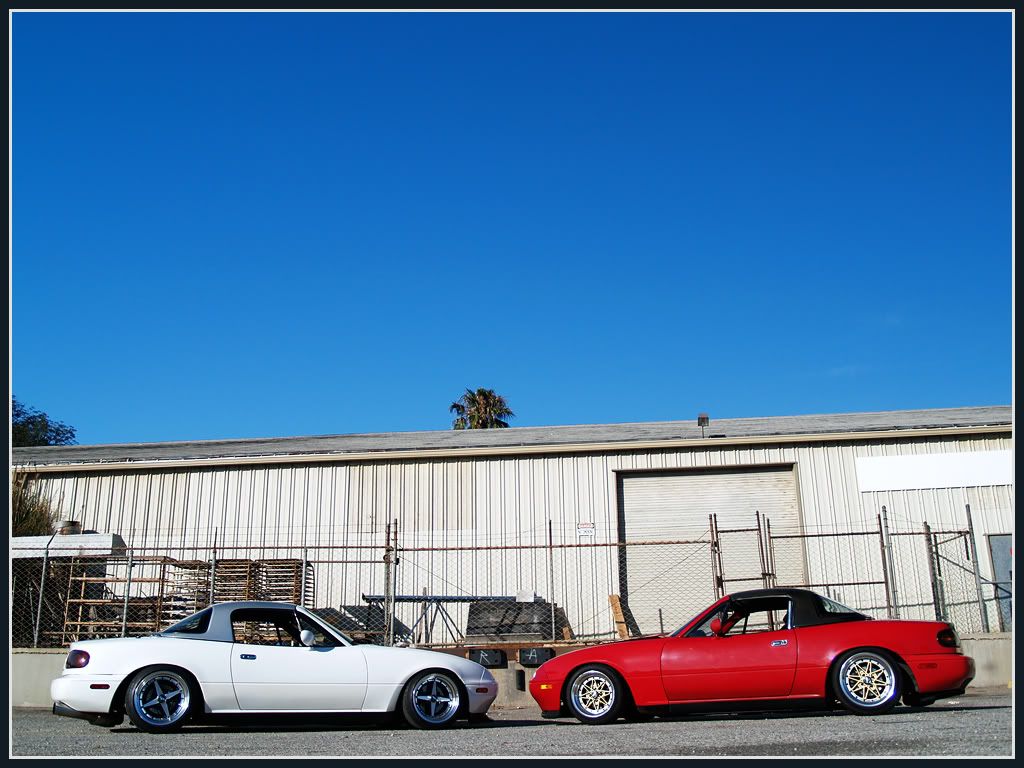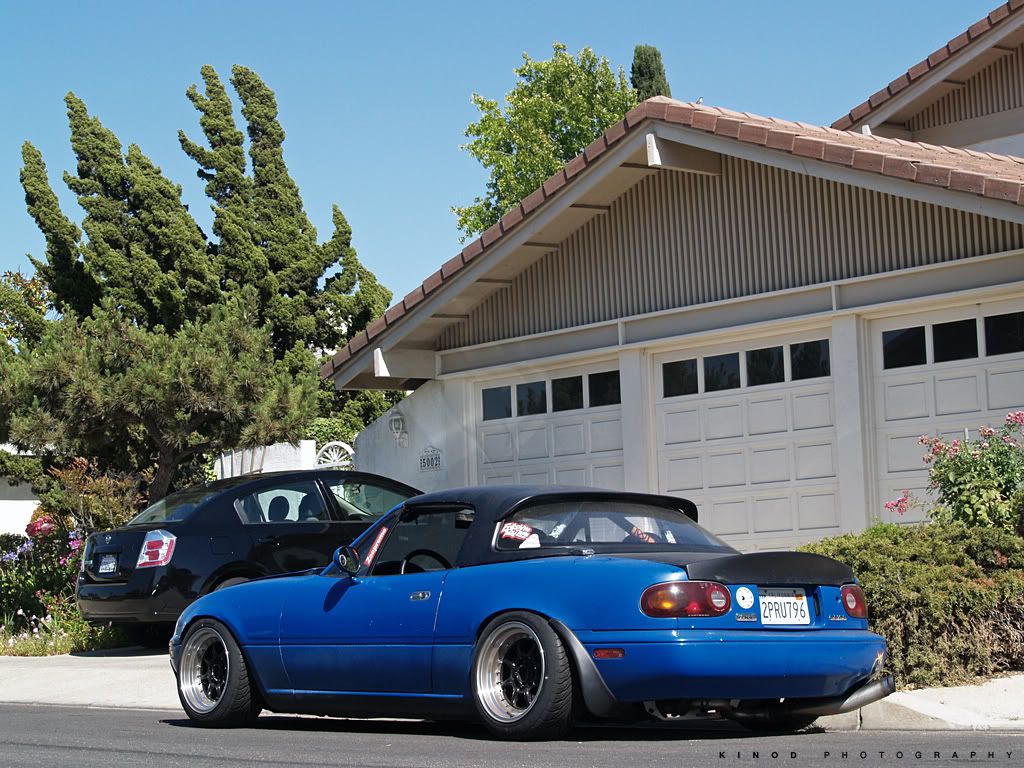It's Fred Puhn, by the way. In case anyone's looking for the book :)
Remember that your car doesn't operate at the static ride height. The suspension's always moving around. A well designed suspension will keep the roll centers under tight control regardless of where you start. However, any suspension will have odd behavior as it reaches the limits of its travel, and if you lower the car excessively then you'll be operating near these limits more often. Still, we have to consider the idealized example of a car at a constant cornering speed on a smooth road if we're going to discuss this, and that's where the static ride height is a basic dimension.
The Miata has excellent roll center control - I think that's why it handles so well and so consistently. A 323 GTX has atrocious geometry from what I've seen, and lowering that car will raise the roll center (at static ride height) causing increased roll.
Ryan9118 is thinking the right way, but generalizing a bit much. The behavior of the camber curves is going to depend on the geometry of a specific suspension, not simply whether it's strut or double-wishbone. But it's not actually the lower control arms that need to be level, it's the inner and outer pivot points. Look at a Miata control arm, and you'll discover that the control arm does not follow a line through these two points.
Lowering the car lowers the CG, which is good because it cuts down on weight transfer (our enemy) and the resultant roll. But when you lower a car, you not only affect your geometry and roll centers, you're also affecting your suspension travel. And this is something that's ignored by too many people. When you hit the bumpstops, your spring rate jumps dramatically and your handling goes screwy as the weight transfer changes dramatically and one end of your car basically turns solid. It's no coincidence that the lap record for Miatas on our local track is held not by the car with the most power, but the one with the most wheel travel. This loss of wheel travel is one big reason you need to run stiffer springs when you lower a car.
The other reason is the old adage, "any suspension will work if you don't let it" :) If you restrict the movement by simply making it too hard for the suspension to move, geometry no longer matters.
Cornerweighting won't affect your rear ride height, really. You can't shift weight front/back with cornerweighting, only diagonally. A good mechanic will manage to keep the ride height and stance exactly the same when putting it on the scales.
So for static show cars and rat rods, there's no such thing as too low. That's because the look is the most important thing. But if you're worried about handling, there's definitely a "too low".











































